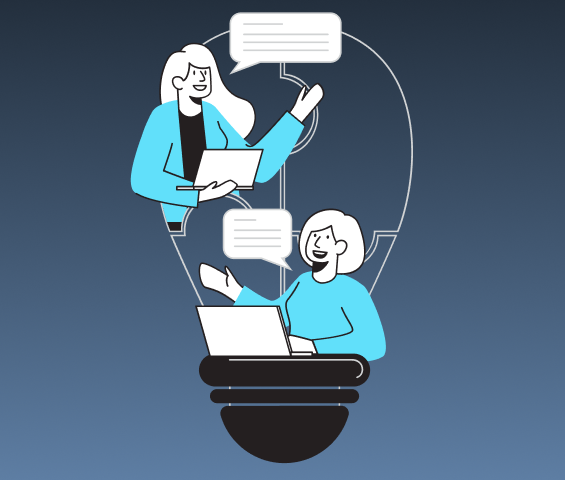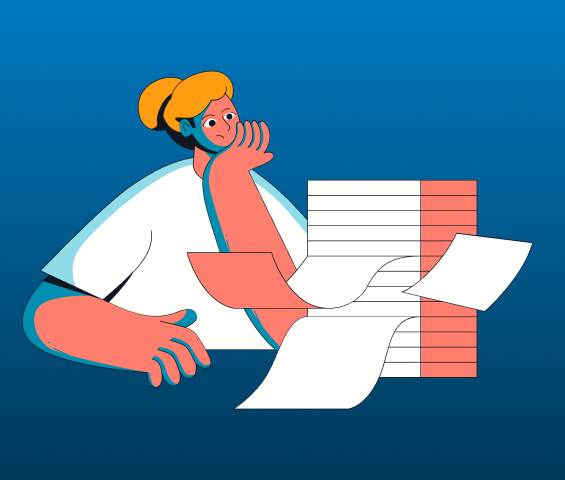How to End a Cover Letter (With Professional Examples)
Want the quick answer?
End your cover letter with a professional closing phrase like "Sincerely" or "Best regards," followed by your full name and contact information. For specific examples and industry-standard formats, keep reading.
Crafting the perfect ending to your cover letter can make the difference between landing an interview or missing your opportunity. Whether you're writing a formal business letter or sending a digital application, your cover letter's conclusion needs to leave a lasting impression while maintaining professional standards.
In this comprehensive guide, you'll learn exactly how to end a cover letter properly, from choosing the right closing phrase to formatting your signature block. If you need personalized assistance, our AI Cover Letter Builder is here to help.
What You'll Learn in This Guide:
Professional closing phrases that hiring managers prefer
Step-by-step formatting instructions for your letter's ending
Industry-specific examples for both printed and digital applications
Common mistakes to avoid when concluding your cover letter
Expert tips for creating a powerful final impression
Professional Cover Letter Closings (That Work in 2025)
Choosing the right closing phrase sets the tone for your final impression. While "Sincerely" remains the most widely accepted option, modern workplace culture has embraced several professional alternatives. Here are the top closing phrases, ranked by formality and industry acceptance:
Highly Formal (Traditional Industries)
Sincerely,
Yours sincerely,
Best regards,
Kind regards,
Modern Professional (Tech & Creative)
Thank you for your consideration,
Looking forward to discussing this opportunity,
Best,
With appreciation,
When to Use Each Closing
"Sincerely" – The Universal Choice Perfect for traditional industries like finance, law, or healthcare. This classic closing works for both printed and digital applications, making it your safest option when unsure about company culture.
"Thank you for your consideration" – The Gracious Approach Ideal when applying for competitive positions or after an extensive interview process. This closing shows both professionalism and appreciation for the reader's time.
"Looking forward to discussing this opportunity" – The Confident Close Best used when your application strongly matches the job requirements. This forward-looking statement subtly suggests your expectation of an interview while maintaining professionalism.
Pro Tip: Always match your closing tone to your industry and the company's culture. A creative agency might appreciate a more modern closing, while a law firm typically expects traditional formality.
For more inspiration, explore Cover Letter Examples tailored for different industries.
Formatting Your Cover Letter Ending (Step-by-Step Guide)
The proper formatting of your cover letter's ending is just as important as the words you choose. Follow these professional guidelines to ensure your closing makes the right impression, whether you're sending a digital application or printed letter.
Essential Formatting Elements:
Closing phrase
Your signature
Full name (typed)
Contact information block
Digital elements (if applicable)
Step-by-Step Format Example:
Best regards,
[Space for written signature]
Jane Smith Senior Marketing
Professional Phone: (555) 123-4567
Email: jane.smith@email.com
LinkedIn: linkedin.com/in/janesmith
Digital vs. Printed Format Differences:
Digital Applications:
Skip the handwritten signature
Use a professional email signature block
Include clickable contact links
Add your LinkedIn profile URL
Keep formatting clean and mobile-friendly
Printed Letters:
Leave space for your handwritten signature
Use blue or black ink for signing
Keep contact information concise
Maintain consistent spacing
Include your physical mailing address
Contact Information Checklist
✓ Full name with relevant credentials
✓ Professional title (optional)
✓ Phone number
✓ Professional email address
✓ LinkedIn profile (if regularly updated)
✓ Portfolio or website (if relevant)
Pro Tip: Always test your digital formatting by sending yourself a test email first. What looks perfect in Word might not translate well to different email clients.
Writing Your Final Paragraph: End With Impact
The final paragraph of your cover letter is your last chance to make a memorable impression. Here's how to craft a conclusion that encourages hiring managers to take the next step.
Essential Elements of a Strong Closing Paragraph:
Restate Your Value Briefly remind the reader why you're the ideal candidate: "With my five years of digital marketing experience and proven track record of increasing conversion rates, I'm confident I can bring similar results to [Company Name]."
Express Enthusiasm Show genuine interest in the role: "I'm particularly excited about the opportunity to lead creative campaigns for your emerging markets division."
Include a Clear Call-to-Action End with a professional prompt for next steps: "I look forward to discussing how my social media expertise aligns with your marketing goals in more detail."
Example Closing Paragraphs:
For Corporate Positions:
Thank you for considering my application. My experience in financial analysis and proven track record of reducing operational costs by 25% align perfectly with [Company Name]'s goals. I look forward to discussing how I can contribute to your team's continued success.
For Remote Roles:
With my established remote work experience and track record of managing virtual teams across time zones, I'm excited about the possibility of contributing to [Company Name]'s distributed workforce. I welcome the opportunity to discuss how my skills align with your team's needs.
Power Tips:
Keep your final paragraph under 4 lines
Avoid generic statements like "Thank you for your time"
Reference specific company details when possible
Maintain confidence without appearing presumptuous
Include a clear but subtle call-to-action
Industry-Specific Examples & Templates
Different industries have varying expectations for cover letter endings. Here's how to tailor your closing for maximum impact in three key sectors.
Corporate/Traditional Industry Example:
In conclusion, my track record of increasing operational efficiency and managing large-scale projects directly aligns with [Company Name]'s focus on excellence. I look forward to discussing how my experience at Morgan Stanley can benefit your team.
Sincerely, [Signature] Michael Chen
Operations Management
Phone: (555) 555-5555
Email: m.chen@email.com"
Creative Industry Example:
I'm excited about the possibility of bringing my creative direction experience to [Company Name]'s innovative brand campaigns. My portfolio (linked below) showcases similar projects that have generated over 2M impressions.
Best regards,
[Signature]
Sarah Martinez Creative Director
Portfolio: www.smartinez.com
Instagram: @smartinezdesign
Remote Position Example
As someone who has successfully managed remote teams across three time zones, I'm confident in my ability to contribute to [Company Name]'s distributed workforce from day one.
Looking forward to connecting,
[Signature]
Alex Thompson Remote Project Manager
Zoom: alex.thompson
Email: alex@email.com
Time Zone: EST
Universal Template
[Final achievement or value proposition] [Company-specific connection] [Clear call-to-action] [Professional closing],
[Name]
[Title]
[Most relevant contact methods for industry]
Quick Tips for Industry Alignment:
Traditional: Focus on metrics and achievements
Creative: Include relevant portfolio/social links
Remote: Emphasize communication tools and availability
Crafting a cover letter that resonates with a hiring manager requires more than generic phrasing. Industry-specific templates can provide the framework you need to address the unique demands of your field. Whether you're applying for a role in finance, healthcare, or the creative sector, Cover Letter Templates can help you create a polished and professional document that aligns with industry expectations.
Common Mistakes to Avoid
Before finalizing your cover letter ending, ensure you're not making these critical errors that could impact your application.
Top Mistakes to Avoid:
Informal Closings
❌ Cheers
❌ Thanks a bunch
❌ See you soon
Formatting Inconsistencies
❌ Mixed fonts or sizes
❌ Irregular spacing
❌ Misaligned contact information
Overconfident Statements
❌ I'll wait for your call
❌ You won't regret hiring me
Frequently Asked Questions
Question: How many spaces should I leave between the closing and my name?
Answer: For digital applications, leave two line breaks. For printed letters, leave four lines for your signature.
Question: Should I include my personal social media links?
Answer: Only include professional social profiles relevant to your industry (LinkedIn, industry-specific portfolios, or professional Twitter accounts).
Question: Is it necessary to sign a digital cover letter?
Answer: No, a typed full name is sufficient for digital applications. Save handwritten signatures for printed letters.
Question: What if I don't know the hiring manager's name?
Answer: Use "Thank you for your consideration" as your closing phrase, rather than anything that might highlight your lack of research.
Conclusion
Ending your cover letter professionally is a crucial step in your job application process. Remember to keep your closing formal, your formatting consistent, and your final paragraph impactful. Whether you're applying through email or traditional mail, these guidelines will help ensure your cover letter ending makes the right impression.
Related Articles
4 min read
Jan 26, 2025

How to Address a Cover Letter Without a Name - Swiftjob
Expert tips on addressing a cover letter without a name, including how to find the recipient's name, alternative greetings, and crafting a professional tone.

